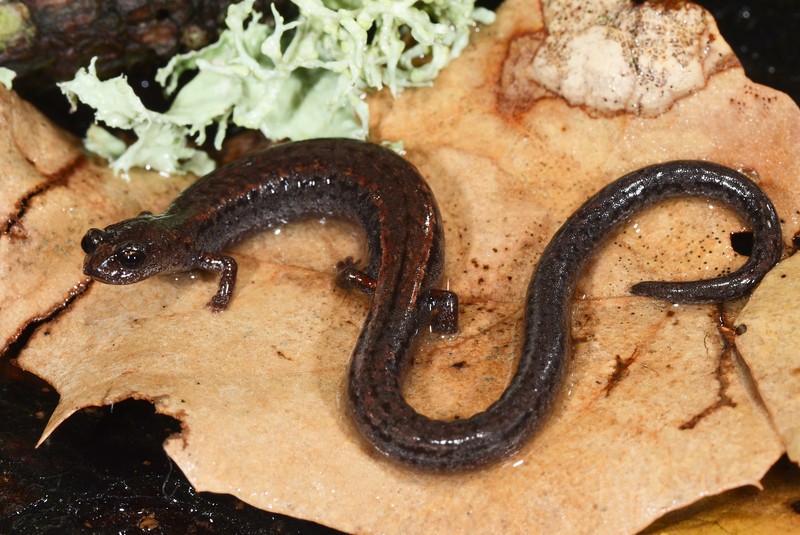Biologists explore link between amphibian behavior and disease
Two SF State biologists have teamed up to study the connection between amphibians' social habits and a disease that has killed a record number of frogs, toads and salamanders worldwide.
This week, Andy Zink and Vance Vredenburg received a new grant from the National Science Foundation (NSF) to explore the relationship between amphibian social behavior and a fungus called Batrachochytrium dendrobatidis (Bd). This harmful fungus attacks an amphibian's skin and causes the disease Chytridiomycosis.
"We are investigating the evolution of amphibians' social behavior after a deadly disease shows up by comparing populations with and without a history of this fungal pathogen," said Zink, assistant professor of biology and principal investigator on the three-year project, funded by a recent $595,000 grant from the NSF. Many animals have evolved social or cooperative behaviors that increase their chances of survival. Among amphibians, frogs sometimes huddle together in piles for warmth, and some salamanders lay their eggs in communal nests, perhaps to help each other ward off predators.

The Santa Lucia Mountains slender salamander, Batrachoseps luciae, is one of the species that Andy Zink and Vance Vredenburg will study. Credit: Sam Murray
In the last 30 years, the Bd fungus appears to have wiped out nearly 400 amphibian species across the world. Because the spores of the fungus are water borne, it is likely to spread among land-dwelling amphibians through skin to skin contact. Therefore, Zink and Vredenburg believe that terrestrial amphibian populations with a longer history of the disease may have evolved away from communal nesting, since this social habit may help the fungus spread.
"If life depends on it, animal behavior can evolve quite rapidly, even in 5-10 years," Zink said.
Most animal behaviors have a genetic basis -- an individual's genes shape whether they will be gregarious or antisocial. If being cooperative aids the survival of individuals or their offspring, natural selection favors this trait and social behavior becomes the norm. Zink and Vredenburg plan to test if new threats in the environment may also reverse this trend.
"The arrival of a devastating pathogen like Bd could mean that the costs of communal nesting outweigh the benefits," said Zink, whose previous research has examined egg cannibalism and fighting among earwigs and mathematical models of social evolution.
Using lab and field studies, Zink and Vredenburg will document the communal nesting habits of a common salamander that has been exposed to Bd since the 1970s, but little is known about the fate of populations in the wild infected with this fungus. Known as slender salamanders, these worm-like creatures build nests under logs and rocks. Sometimes as many as 15 females lay their eggs in the same nest.
"These salamanders are the most common amphibian in California," Zink said. "They're easy to find -- you can even spot them on campus. This is the perfect group of species for the questions we're interested in."
Zink and Vredenburg plan to focus on seven of the 28 species found in California, because thousands of individuals of these species are preserved in museums.
Field observations of salamander behavior will be combined with historical data about the Bd fungus in these same populations. The researchers and their graduate students will use thousands of museum specimens, collected over the last 100 years. By testing DNA from the preservative-soaked skins of these creatures, they will map the timing and spread of Bd among California's slender salamanders.
"We'll look at how the nesting habits of distinct salamander populations correspond to their level of infection and how long the pathogen has been in their community," said Vredenburg, an associate professor of biology.
The study will be one of the first to examine the relationship between amphibian social behavior and the Bd fungus. Zink and Vredenburg believe this study is important because behavior could be a missing link in understanding how the disease can be better managed.
"Chytridiomycosis, the disease caused by Bd, is the worst vertebrate disease in history, and it's really difficult to predict which species will be affected and what we can do about saving those species," Vredenburg said. "The major factor that hasn't yet been studied in Bd disease ecology is the effects of the behavior of the host."
In addition to focusing on behavior, the researchers will test the skin of salamanders in the field to see whether some populations have beneficial symbiotic bacteria on their skin that may help them survive the fungus. This continues Vredenburg's previous research, which explores the possibility that treating endangered amphibians with beneficial bacteria could help them survive Bd outbreaks without dying.
-- Elaine Bible